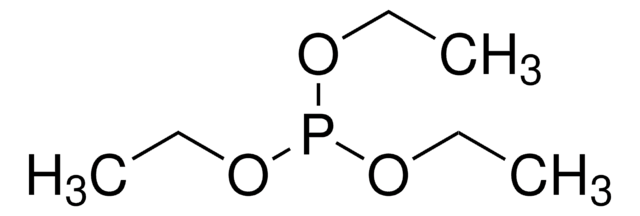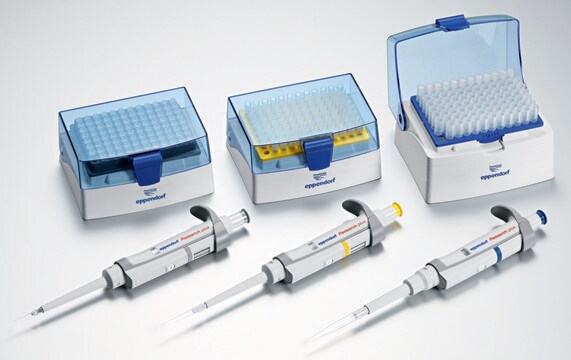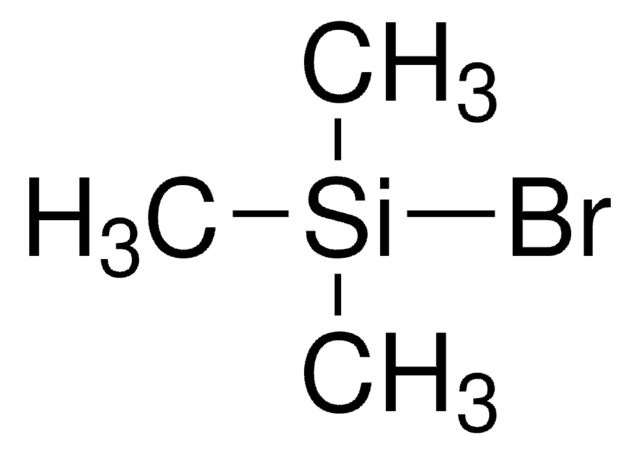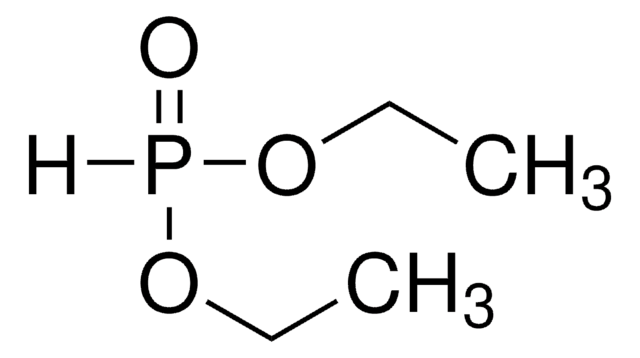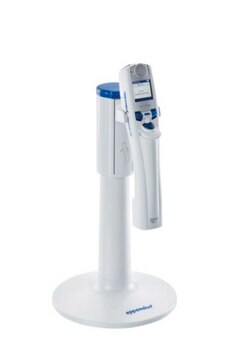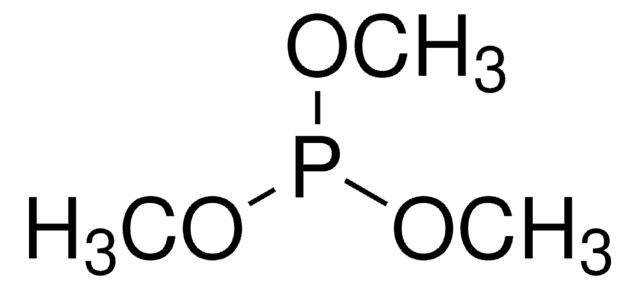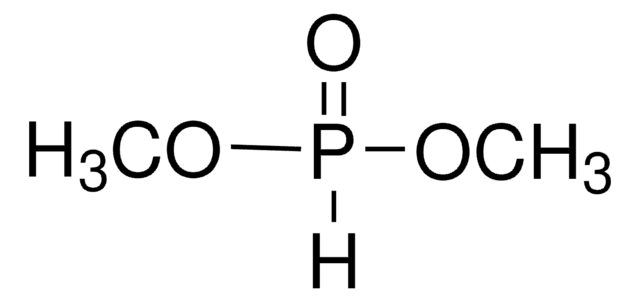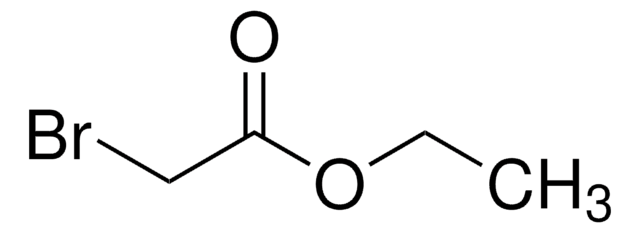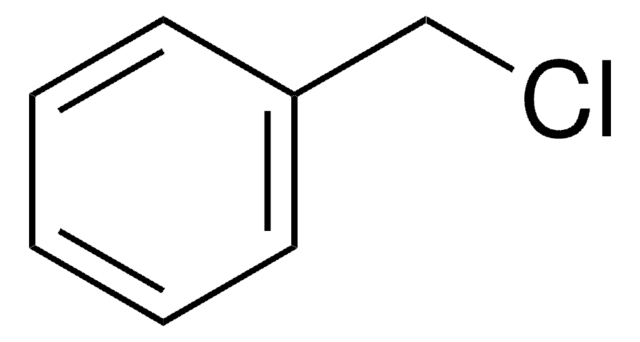8.00549
Trietylofosforyn
for synthesis
Synonim(y):
Triethylphosphite
About This Item
Polecane produkty
ciśnienie pary
<6 hPa ( 20 °C)
Poziom jakości
Próba
≥97.0% (GC)
Formularz
liquid
temp. samozapłonu
250 °C
siła działania
2800 mg/kg LD50, skin (Rabbit)
granice wybuchowości
3.75-42.5 % (v/v)
bp
156-158 °C/1013 hPa
mp
-112 °C
temp. przejścia
flash point 52 °C
gęstość
0.956 g/cm3 at 20 °C
temp. przechowywania
no temp limit
ciąg SMILES
P(OCC)(OCC)OCC
InChI
1S/C6H15O3P/c1-4-7-10(8-5-2)9-6-3/h4-6H2,1-3H3
Klucz InChI
BDZBKCUKTQZUTL-UHFFFAOYSA-N
Zastosowanie
- Mechanizm acylacyjnych reakcji utleniania-redukcji-kondensacji: Badania szczegółowo opisują zastosowanie trietylofosforynu jako stechiometrycznego reduktora w acylacyjnych reakcjach utleniania-redukcji-kondensacji, wykorzystujących benzoizotiazolony jako utleniacze. Badanie to zapewnia wgląd w mechanizmy reakcji i potencjalne zastosowania w chemii syntetycznej (Gangireddy et al., 2017).
- Synteza i aktywność przeciwnowotworowa pochodnych oksazafosfinanu: Badanie nad wydajną syntezą nowych pochodnych oksazafosfinanu przy użyciu trietylofosforynu, badające ich aktywność przeciwnowotworową. Badania obejmują krystalografię rentgenowską, badania DFT i dokowanie molekularne w celu oceny potencjalnych zastosowań medycznych (Bahadi et al., 2023).
- Redukcyjne przegrupowania Irelanda-Claisena: Trietylofosforyn został wyróżniony w katalizowanych miedzią redukcyjnych przegrupowaniach Irelanda-Claisena propargilowych akrylanów i allilowych allenianów, wykazując jego rolę w ułatwianiu złożonych transformacji molekularnych w syntezie organicznej (Guo et al., 2022).
- Odsiarczanie w świetle UV: Trietylofosforyn jest wykorzystywany w syntezie dezoksyglikozydów poprzez procesy odsiarczania w świetle UV, co pokazuje jego użyteczność w glikoznawstwie i opracowywaniu nowych glikokoniugatów do różnych zastosowań (Ge i in., 2017).
- Wykrywanie i identyfikacja lotnych trialkilofosforynów: Strategia derywatyzacji wykorzystująca trietylofosforyn do wykrywania i identyfikacji lotnych trialkilofosforynów przy użyciu chromatografii cieczowej - ekstrakcji w fazie stałej i spektroskopii magnetycznego rezonansu jądrowego w trybie offline, z podkreśleniem jej zastosowań analitycznych (Mazumder i in., 2015).
Komentarz do analizy
Density (d 20 °C/ 4 °C): 0.955 - 0.957
Identity (IR): passes test
Hasło ostrzegawcze
Warning
Zwroty wskazujące rodzaj zagrożenia
Zwroty wskazujące środki ostrożności
Klasyfikacja zagrożeń
Acute Tox. 4 Oral - Aquatic Chronic 3 - Flam. Liq. 3 - Skin Sens. 1B
Kod klasy składowania
3 - Flammable liquids
Klasa zagrożenia wodnego (WGK)
WGK 2
Temperatura zapłonu (°F)
129.2 °F - closed cup
Temperatura zapłonu (°C)
54 °C - closed cup
Certyfikaty analizy (CoA)
Poszukaj Certyfikaty analizy (CoA), wpisując numer partii/serii produktów. Numery serii i partii można znaleźć na etykiecie produktu po słowach „seria” lub „partia”.
Masz już ten produkt?
Dokumenty związane z niedawno zakupionymi produktami zostały zamieszczone w Bibliotece dokumentów.
Klienci oglądali również te produkty
Nasz zespół naukowców ma doświadczenie we wszystkich obszarach badań, w tym w naukach przyrodniczych, materiałoznawstwie, syntezie chemicznej, chromatografii, analityce i wielu innych dziedzinach.
Skontaktuj się z zespołem ds. pomocy technicznej